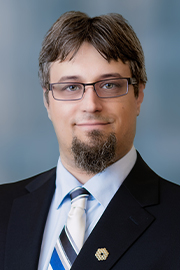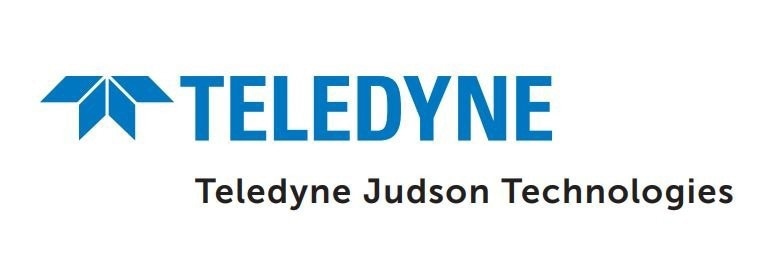Who are Teledyne Judson?
Teledyne Judson is a world-leading IR sensor manufacturer, covering the entire infrared spectrum range with several materials and solutions. Located in Montgomeryville, PA, just outside of Philadelphia in the United States, we supply sensors for some of the most critical applications, from measuring the gases in the air and the purity of medicines to observing the Earth, Moon, Mars, and the whole universe.
What types of products does Teledyne Judson manufacture?
Utilizing our in-house semiconductor fabrication facility, we manufacture quantum sensors in photoconductive and photovoltaic configurations from various materials, including InGaAs, MCT, InAs, InSb, and InAsSb.
What industries can Teledyne Judson impact with its products and services?
Our customers use our products in gas sensing, spectroscopy, including FTIR, laser beam power monitoring and profiling, defense and security, Earth Observation, hyperspectral imaging, pyrometry (temperature measurement), and radiometry.
What is a bolometer, and how is it useful for aerospace and defense applications?
A bolometer is a device that senses illumination by measuring the change in temperature of a piece of material through a change in resistance. These devices, particularly the small microbolometers, are generally made using MEMS fabrication techniques.
These can be simple, low-cost devices but very fragile and less sensitive than quantum sensors. The response time of these devices is on the order of 10 milliseconds. Microbolometers can be made into arrays like a camera to carry out imaging.
Thermopiles use the differential voltage generated where two dissimilar materials are joined with a temperature gradient. Devices that sense radiation are manufactured as flat plates with many junctions to amplify the signal.
The signal output is small and depends on temperature differences and so requires an internal temperature reference. These are sensitive to material stresses and local electrical fields. As such, the device has to be carefully handled and mounted to avoid it as it heats and cools in response to the incoming radiation. The response time of these devices is on the order of 30 milliseconds.

Image Credit: Margaret_Art/Shutterstock.com
How does Teledyne Judson address the needs of space missions with products that cover the full infrared spectrum?
Teledyne Judson offers a full range of sensors, linear arrays and focal plane arrays to cover the sensing requirements of any space mission and have been supporting space missions since 1979. Our technology has been throughly proven out, and our ability to provide both COTS and custom sensors allows mission planners to have design flexibility when defining the mission.
What are some specific advantages of MCT vs bolometers, thermopiles and pyroelectric sensors?
The sensitivity of MCT to infrared radiation is 100x that of competing technologies over a wide range of wavelengths from 1 to 25 microns. MCT also offers high detection speed, with bandwidths up to and beyond 1,000,000 Hz, while bolometers and thermopiles are limited to about 100 Hz and pyroelectric sensors at 1,000 Hz.
MCT also offers smaller device sizes, with the sensing element being as small as the diameter of a hair, while competing technologies are around 1 mm in size.
MCT has unique material properties to tune the detector to specific wavelengths. Why is this versatility important, and how can it benefit MCT users?
MCT can be tailored to change the wavelength that the sensor is most sensitive to, allowing the user to optimize sensitivity to the wavelengths of interest and exclude unwanted longer-wavelength thermal radiation, which may otherwise overwhelm the signal without needing expensive optical filters. By changing the material composition when the sensor is grown, Teledyne’s sensors can be sensitive from the near-UV to the very-long-wave infrared, giving us an unparalleled ability to measure what matters most to our customers.
What are some innovative uses of MCT technology that users can expect to see in the near future?
There are several new capabilities that customers are taking advantage of. Firstly, making small arrays of the MCT sensors allows multi-point temperature measurements with one sensor without the overhead of a full image sensor.
This can be utilized in sensors for measuring industrial processes or for safety systems such as railroad-bearing temperature measurements.
Secondly, the use of molecular beam epitaxy, a way of growing very pure and exact layers of MCT, performs superior to any other product on the market today. We see interest in these sensors for measuring gases like carbon dioxide, performing spectroscopy on parts-per-billion level contaminants, and ensuring the air is safe from toxic materials.
About Paul Mark
Paul Mark is Teledyne Judson Technologies’ Director of Marketing (Infrared). Paul actively leads the strategic marketing and expansion of the company’s broad expertise in infrared sensors and camera technology to address today's pressing challenges across the spectrum. He joined the company in this role due to his desire “to push the boundaries of existing technologies and materials and bring them to a point where they can be used practically for great effect.”
Paul brings over a decade of high-technology product development, customer and market interaction to his role. He joined Teledyne from Zygo, a part of Ametek, where he developed laser and white-light interferometer accessories. Paul joined Zygo from ASML where he led a group of optomechanical engineers, designing the next generation overlay measurement systems for ASML’s photolithography scanners. Before joining ASML, he worked with Coherent’s Advanced Crystal Growth division, developing amplifier and harmonic generation modules for laser product development.
joined Zygo from ASML where he led a group of optomechanical engineers, designing the next generation overlay measurement systems for ASML’s photolithography scanners. Before joining ASML, he worked with Coherent’s Advanced Crystal Growth division, developing amplifier and harmonic generation modules for laser product development.
Paul earned his Ph.D. in Materials Science at Rutgers University working on Nanophotonics, modeling of nanosystem assembly, and infrared optics. He received his B.S. in Physics at the University of Vermont focusing on X-ray diffraction of copolymer systems. He is a published author in Chemistry of Materials, Polymer, and Powder Diffraction, and speaks at scientific conferences.

This information has been sourced, reviewed and adapted from materials provided by Teledyne Judson Technologies.
For more information on this source, please visit Teledyne Judson Technologies.
Disclaimer: The views expressed here are those of the interviewee and do not necessarily represent the views of AZoM.com Limited (T/A) AZoNetwork, the owner and operator of this website. This disclaimer forms part of the Terms and Conditions of use of this website.